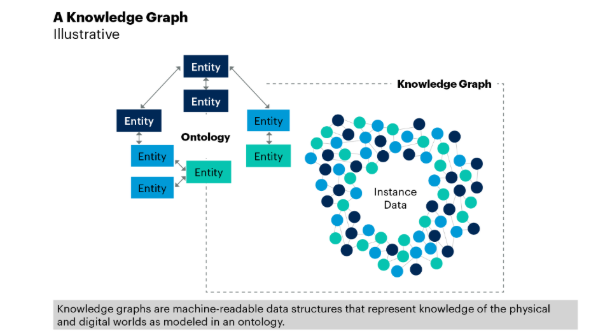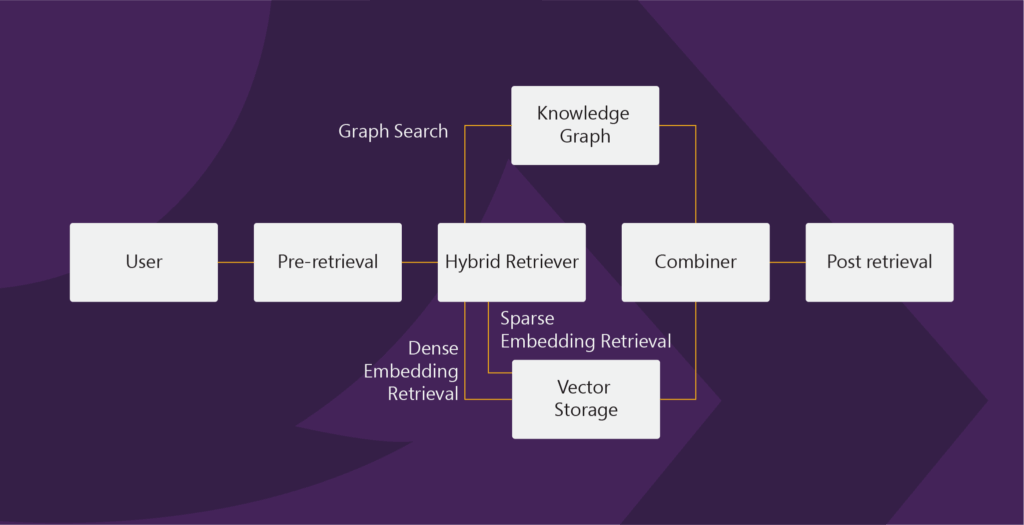Accelerate IT operations with AI-driven Automation
Automation in IT operations enable agility, resilience, and operational excellence, paving the way for organizations to adapt swiftly to changing environments, deliver superior services, and achieve sustainable success in today's dynamic digital landscape.
Driving Innovation with Next-gen Application Management
Next-generation application management fueled by AIOps is revolutionizing how organizations monitor performance, modernize applications, and manage the entire application lifecycle.
AI-powered Analytics: Transforming Data into Actionable Insights
AIOps and analytics foster a culture of continuous improvement by providing organizations with actionable intelligence to optimize workflows, enhance service quality, and align IT operations with business goals.
What Happens When IT Knows Itself?
Imagine a system that not only tracks your IT assets – them. A system that knows which services depend on which APIs, which microservice serves which business function, and what the ripple effects of a database configuration change might be.
This is not your traditional CMDB that’s static and often outdated. This is the Auto-Discovered Knowledge Graph + RAG engine inside Qinfinite – the brain powering your next-gen IT operations. It’s like giving your IT landscape a mind of its own, enabling faster problem-solving, smarter decision-making, and smoother management across the board.
A recent survey found that 48% of M&A professionals are now using AI in their due diligence processes, a substantial increase from just 20% in 2018, highlighting the growing recognition of AI’s potential to transform M&A practices.
Why Traditional CMDB Falls Short
Conventional CMDBs and asset discovery tools have long been the backbone of IT inventory management, but their usefulness often stops at simply cataloging what exists. At best, they provide a snapshot- a static list of servers, applications, and devices without capturing the full story of how these pieces interact or influence one another.
The reality is these systems quickly become outdated because they rely heavily on manual updates, which are time-consuming and prone to error. As infrastructure evolves especially with the rise of multi-cloud deployments and microservices architectures, these traditional tools struggle to keep pace. They tell you what assets are in place but leave you in the dark about how these assets depend on each other, how data flows, or how a change in one component might ripple through the system.
In the complex multi-cloud, microservice-heavy environments, this limited visibility hinders effective decision-making and slows down response times. What’s needed is a fundamentally different approach: a living, breathing model that continuously reflects your environment in real-time. To manage, optimize, and automate IT operations, you need something deeper: a continuously updated, context and relationship-aware, queryable model of your entire ecosystem.
Enter Qinfinite’s Knowledge Graph + Retrieval-Augmented Generation (RAG)
At the core of Qinfinite lies an intelligent Auto-Discovered Knowledge Graph – an evolving, AI-augmented digital model of your enterprise IT. Every node is an asset, every edge a dependency, and every update is reflected in real time.

Source: Gartner
Paired with Retrieval-Augmented Generation, Qinfinite doesn’t just store knowledge – it reasons with it.
What Makes This Different?
| Capability | Legacy CMDB | Qinfinite Knowledge Graph |
|---|---|---|
| Asset Discovery | Manual / Partially automated | Fully automated, multi-domain |
| Dependency Mapping | Static / limited | Dynamic, AI-driven |
| Updates | Periodic / Manual | Continuous / Real-time |
| Querying | Technical | Natural language (via RAG) |
| Use in AI | Low | Central to reasoning and automation |
Qinfinite transforms discovery from a documentation task into the foundation of intelligent operations.
What’s in the Qinfinite Enterprise Knowledge Graph?
Qinfinite’s Knowledge Graph includes:
- Infrastructure: servers, VMs, storage, containers
- Applications: services, APIs, databases, versions
- Users & Roles: who owns what, who interacts with what
- Business Processes: workflows, transactions, functions
- Integrations: queues, connectors, ETL jobs, middleware
And most importantly, it understands how all these components interact across domains.
Where RAG Comes In: Asking Questions with Context
Now, pair this with a RAG engine: when someone types,
“What caused yesterday’s batch job failure?”
“Which systems will be impacted if I change this API?”
“Who owns the middleware service linked to claims processing?”
Qinfinite doesn’t just guess or search documentation. It retrieves the relevant context from the knowledge graph and generates a natural, actionable answer. It’s like having a systems architect, incident commander, and process analyst rolled into one AI assistant.

Real-World Outcomes
The following use cases highlight how a deeper understanding of IT environments transforms everyday challenges into streamlined, manageable processes. From speeding up troubleshooting to ensuring safer changes and empowering new team members, these examples show the tangible impact of moving beyond traditional tools.
Faster Root Cause Analysis (RCA)
When issues arise, pinpointing the underlying cause quickly is critical. The Knowledge Graph lays out the full map of upstream and downstream connections, giving teams a clear view of how systems relate. Instead of sifting through logs or guessing, they can trace the problem’s origin in a matter of minutes, saving valuable time and minimizing downtime.
Proactive Change Management
Before rolling out updates or configuration tweaks, it’s important to understand the possible consequences. With this system, teams can simulate changes in a virtual environment and see exactly which parts of the infrastructure might be affected, helping avoid surprises and cascading failures.
Onboarding & Knowledge Retention
New hires don’t have to rely solely on word-of-mouth or hunting down experts to get up to speed. The Knowledge Graph acts as an interactive guide, letting them explore how different components connect and behave. This reduces dependence on “tribal knowledge” and helps build a more resilient team.
Improved Automation Accuracy
IT operations automation depends on accurate information about service dependencies. By tapping into live data from the Service Catalog, workflows can adjust to the current state of the environment. This means fewer missteps, less risk, and smoother execution of automated tasks.
Qinfinite Success Story: How a Large Enterprise Tamed 2,200+ Applications with AI
A large pan-European enterprise, recently formed through multiple mergers, was grappling with a sprawling IT ecosystem:
- 2,200+ enterprise applications
- 8 countries
- A mix of AWS, Azure, SaaS, PaaS, and 3 regional data centers
- 12,000+ application and B2B integration points
The scale was massive. The visibility? Fragmented at best.
They needed more than just a spreadsheet or a CMDB update – they needed a live, intelligent understanding of their IT environment.
What They Did with Qinfinite
Within the first 12 weeks of deploying Qinfinite:
- 85% of IT assets were automatically discovered and tagged
- The Knowledge Graph mapped applications to processes, business owners, dependencies, and cost centers
- 12,000+ interfaces across middleware platforms like webMethods, MuleSoft, and SAP CPI were visualized
- Qinfinite’s FinOps Dashboards modeled business value vs. cost – per system, per transaction
This empowered leadership to make data-driven decisions like:
- Identifying 3 redundant platforms to decommission – unlocking $2.8M/year in savings
- Rationalizing systems with cost-per-transaction metrics
- Benchmarking for a 20% cost optimization goal over 3 years
Why It Mattered
With Qinfinite’s Knowledge Graph at the core:
- Architects had visibility into what was connected and what could be shut down
- Finance could align spending with business value
- IT could manage change risk with clarity
- Business leaders had a common view to prioritize investments
This wasn’t just about asset discovery. It was about giving every stakeholder a shared understanding of IT – at scale and with confidence.
Summarizing why Qinfinite’s Knowledge Graph is Different
- Auto-discovery across on-prem, multi-cloud, and hybrid environments
- Continuously updated with minimal human input
- Paired with Retrieval-Augmented Generation (RAG) for natural answers
- Integrated with automation, incident management, and change workflows
- Rich, queryable, and role-aware – from DevOps to CIOs
Concluding Note
In a world where IT ecosystems are increasingly ephemeral, real-time, AI-ready understanding is no longer optional.
Qinfinite turns fragmented data into connected knowledge, powering every layer of IT – from automation to risk mitigation to business alignment.
Want to see it live in action?
Schedule a personalized session with our experts to show you how Qinfinite’s Knowledge Graph + RAG can power real-time discovery, smarter RCA, and better change decisions – all without replacing your tools. Reach us today!
FAQs Related to Auto-Discovered Knowledge Graph + RAG
Qinfinite is a next-generation intelligent platform that reimagines the traditional Configuration Management Database (CMDB). Unlike static, manually maintained CMDBs, Qinfinite uses automation, AI, and real-time data to build a dynamic view of your IT ecosystem. It connects configuration data with business context, enabling better decision-making, faster incident resolution, and more meaningful insights. While conventional CMDBs often struggle with data accuracy and relevance, Qinfinite ensures your configuration data is living, contextual, and experience driven.
In IT operations, a Knowledge Graph is a structured, interconnected representation of entities like applications, services, devices, and the relationships between them. Within Qinfinite, the Knowledge Graph forms the backbone of understanding how different components interact, not just technically, but also in terms of business impact. This allows IT teams to visualize dependencies, trace changes, and understand ripple effects across the IT landscape, leading to more accurate troubleshooting and strategic planning.
Qinfinite uses intelligent auto-discovery mechanisms to continuously scan your infrastructure- cloud, on-premises, or hybrid – and identify assets, their configurations, and interdependencies. This includes everything from servers and applications to APIs and data flows.
Retrieval-Augmented Generation (RAG) combines the strengths of large language models (LLMs) with real-time data retrieval to generate more accurate, relevant, and contextual responses. In the context of Qinfinite, RAG enables the platform to pull in relevant knowledge like system logs, historical incidents, or documentation and use it to enrich AI-generated answers. This makes troubleshooting and decision-making far more precise, bridging the gap between static knowledge bases and dynamic operational environments.
Qinfinite streamlines Root Cause Analysis by using its Knowledge Graph and real-time telemetry to trace issues back to their source. Instead of chasing symptoms across disconnected systems, the platform maps the full chain of dependencies and events, making it easier to pinpoint where and why a failure occurred. AI-assisted analysis also highlights patterns and past incidents, allowing IT teams to respond faster and reduce mean time to resolution (MTTR).
Qinfinite is ideal for complex, dynamic, and digitally mature organizations, especially those in industries like finance, retail, telecom, healthcare, and manufacturing. Any organization dealing with large-scale infrastructure, hybrid environments, or rapid change will benefit from Qinfinite’s intelligent visibility, contextual insights, and automation.
No, Qinfinite doesn’t replace your existing tools; it enhances them. It integrates with your current ITSM, monitoring, and DevOps systems to create a unified intelligence layer. Instead of adding another silo, Qinfinite acts as a connective tissue that makes your existing tools smarter and more contextual. It’s designed to amplify the value of your existing investments, not disrupt them.